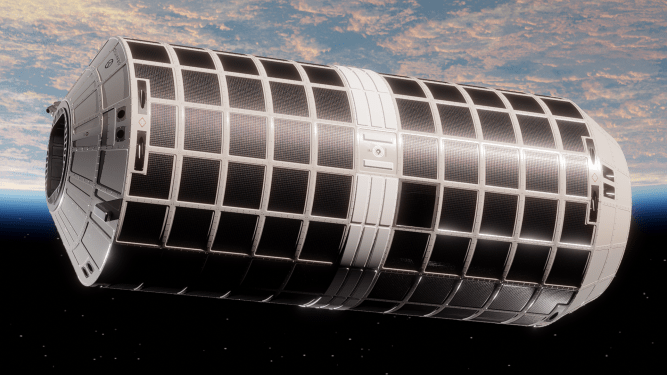Responsive Space Missions Get a Boost
The U.S. Space Force has awarded Gravitics a contract worth $1.7 million to develop orbital platforms that will enable responsive space missions. This move is part of the Space Force’s larger initiative to procure space capabilities from private industry on unprecedented timelines.
Tactically Responsive Space (TacRS) – A New Era in Space Procurement
The TacRS program aims to revolutionize the way the U.S. Space Force procures space capabilities by leveraging commercial technologies and partnerships with private industry. This approach has already led to record-breaking missions, such as Firefly Aerospace’s Alpha rocket, which launched just 27 hours after receiving its launch notice from the Space Force under a TacRS contract.
Gravitics’ Module: A Key Component in Enabling TacRS
While Gravitics was unable to provide more details about the exact concept of operations, co-founder and CMO Mike DeRosa clarified that the company is not developing a module for a tactically responsive launch. Instead, the mission involves creating platforms to enable a new kind of tacitly responsive space mission.
Partnership with Rocket Lab, True Anomaly, and Others
Gravitics will be working closely with several other companies under the contract, including Rocket Lab, True Anomaly, Space Exploration Engineering, and Eta Space. These partners will assist in refining mission architecture, developing use-case specific outfitting, and creating flight hardware.
Space Safari Program Office: A Key Player in TacRS
The $1.7 million contract was awarded by SpaceWERX in partnership with the Space Systems Command’s Space Safari Program Office. In a statement, Lt Col Jason Altenhofen, director of operations at Space Safari, highlighted Gravitics’ module as an "unconventional and potentially game-changing solution for TacRS."
The Future of Responsive Space: Innovation and Collaboration
As the U.S. Space Force continues to push the boundaries of space procurement, innovation, and collaboration will be crucial in achieving its goals. The TacRS program is a testament to this vision, bringing together private industry and government agencies to create new opportunities for responsive space missions.
Key Players in the TacRS Program
- Gravitics: Developer of orbital platforms for tacitly responsive space missions
- Rocket Lab: Awarded separate responsive space contracts for the Victus Haze mission
- True Anomaly: Partnering with Gravitics and Rocket Lab on the Victus Haze mission
- Space Exploration Engineering: Contributing to the development of flight hardware under the TacRS contract
- Eta Space: Participating in the refinement of mission architecture and use-case specific outfitting
The Benefits of TacRS
The TacRS program offers numerous benefits, including:
- Faster Mission Execution: The program enables the rapid deployment of space capabilities, reducing the time between launch notice and mission execution.
- Increased Flexibility: TacRS allows for greater flexibility in mission planning and execution, enabling the U.S. Space Force to respond quickly to changing circumstances.
- Cost Savings: By leveraging commercial technologies and partnerships with private industry, the program can reduce costs associated with traditional space procurement methods.
Conclusion
The awarding of the $1.7 million contract to Gravitics marks a significant step forward in the TacRS program, highlighting the importance of innovation and collaboration in achieving responsive space missions. As the U.S. Space Force continues to push the boundaries of space procurement, we can expect even more exciting developments in this field.
Additional Reading



